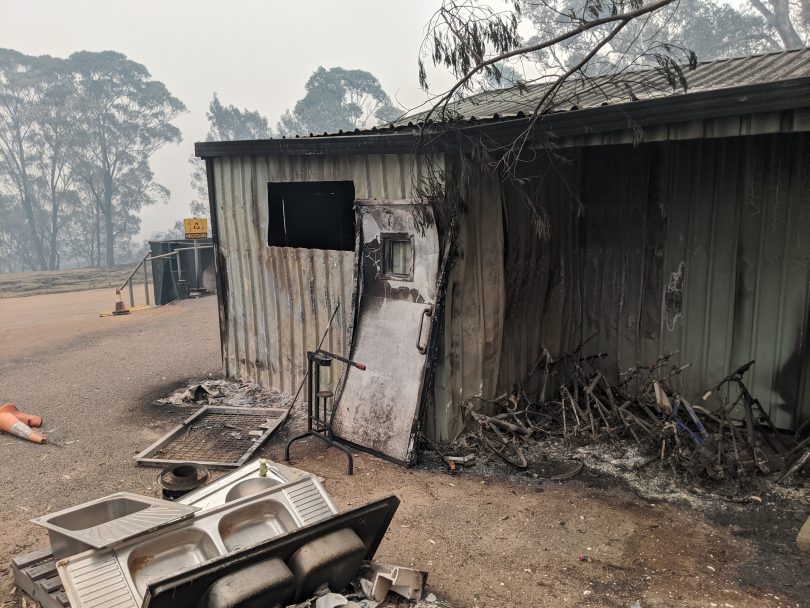
The fire-impacted Cobargo Transfer Station will become a landfill site. Photo: Supplied.
There’s no standard response or ‘correct’ reaction when people slowly start returning to their burnt homes or properties. The feelings and emotions are as diverse as the people.
Some haven’t been able to return yet and dread seeing the damage in person.
Some have had friends or neighbours take photos so they can choose when to view the wreckage and others have gone straight to work, beginning to clean up and repair what they can.
For those who have access to their fire-damaged properties, the instinct is to sift through the remains to see what can be salvaged, perhaps to mourn the recognisable items.
But Southern NSW Local Health District Director of Public Health Tracey Oakman is reminding residents and their families to take extra precautions when returning to homes and properties affected by bushfires. Many homes contain toxic materials which can be hazardous to health, even after being burnt.
“Residents returning home after bushfires should first check with local emergency services to see if it is safe,” Ms Oakman says.
“Burnt houses, sheds or other structures can leave behind health hazards including fallen or sharp objects, smouldering coals, damaged electrical wires, leaking gas or weakened walls.
“Do not spread or disturb ash around your property, particularly if treated timber was burnt in the fire.”
Residents with rainwater tanks should also be aware of specific advice around their use following a bushfire.
“Bushfires generate large amounts of smoke and ash, and your tank water could have become contaminated from debris and ash or dead animals. If the water tastes, looks or smells unusual do not drink it or give it to animals,” Ms Oakman recommends.
The Asbestos Diseases Foundation of Australia warns that asbestos is a potential problem for families across Australia who have had homes or outbuildings damaged or destroyed by the recent bushfire catastrophe.
President Barry Robson said that too many lives had been lost already to asbestos disease in Australia and that heartbroken families sifting through the remains of their houses searching for valuables may unwittingly expose themselves to asbestos contamination.
“Asbestos is found in many Australian houses built before 1984, as well as in outbuildings and sheds on farms.
“When products containing asbestos are broken or disturbed, the asbestos becomes ‘friable’ and if particles are then inhaled then the disaster that has befallen so many can be compounded.
“There is simply no safe level of exposure to asbestos products. We know that people have died in this country as a result of very small levels of exposure.”
Mr Robson also counselled caution when engaging contractors to remove building material, saying that unlicenced opportunists who may not safely dispose of toxic material could take advantage of the situation.
“Already the stories have started about shonks moving in to prey on heartbroken families cleaning up. If you need to engage contractors to remove material from your property, always seek and record their asbestos removal licence.”
The question of how best to clean up fire-damaged buildings will continue for some time.
In the Bega Valley, though, there’s been some good news for those in the Cobargo region who are embarking on a property clean-up.
“Council is very happy to have received approval from the NSW Environment Protection Authority (EPA) to convert the fire impacted Cobargo Transfer Station into an engineered landfill site, which will be redesigned to enable it to take asbestos and construction and demolition waste from fire-affected properties,” the Bega Valley Council announced this week.
The Cobargo Transfer Station was built on top of an old landfill and so it is already considered a contaminated site – we won’t be contaminating natural ground,” says Council’s Acting Director of Assets and Operations, Chris Best.
“Disposal will be much more efficient and the risks of carting asbestos across the Shire or long distances will be minimised,” Mr Best added.
Planning for the site transformation is underway and the Council is working towards having the landfill constructed and operational in the near future.
For more information about Bega Valley Shire Council’s waste services visit www.begavalley.nsw.gov.au/waste, download the Bega Valley Waste App or phone Council on 6499 2222.







